NIL
College basketball’s biggest winners and losers from the 2025 NBA Draft deadline to stay or go
There was plenty of drama during the final few days before the deadline for players to withdraw from the 2025 NBA Draft and return to play another season of college basketball. While Washington State’s Cedric Coward made his intentions of staying in the draft known well before Wednesday’s deadline, others kept fans, coaches and NBA teams […]
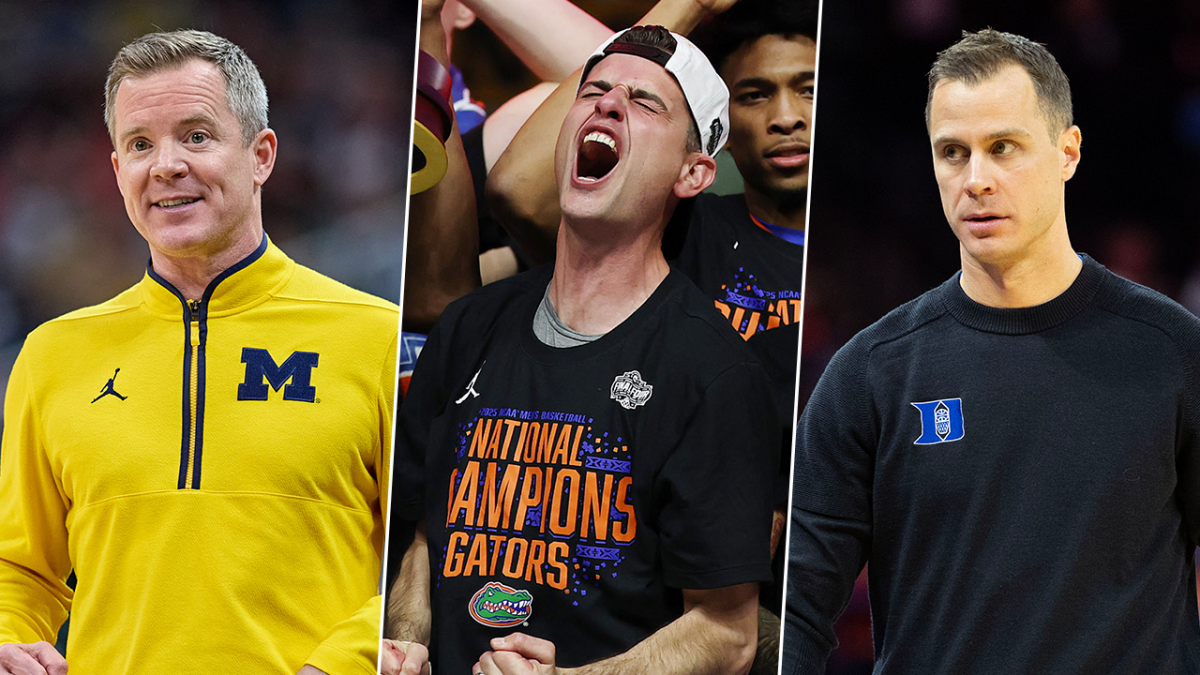
There was plenty of drama during the final few days before the deadline for players to withdraw from the 2025 NBA Draft and return to play another season of college basketball. While Washington State’s Cedric Coward made his intentions of staying in the draft known well before Wednesday’s deadline, others kept fans, coaches and NBA teams in suspense during the final hours.
Kentucky star Otega Oweh kept everyone guessing leading up to the Wednesday deadline. The potential second-round pick elected to return to Kentucky where he projects as a possible SEC Player of the Year candidate.
Another contender for that award also turned down the NBA. Auburn guard Tahaad Pettiford turned down a potential late first-round draft spot for NIL deal with the Tigers north of $2 million, a source told CBS Sports’ Matt Norlander.
2025 NBA Draft: Top late decisions of underclassmen deciding if they should withdraw or turn pro
Cameron Salerno
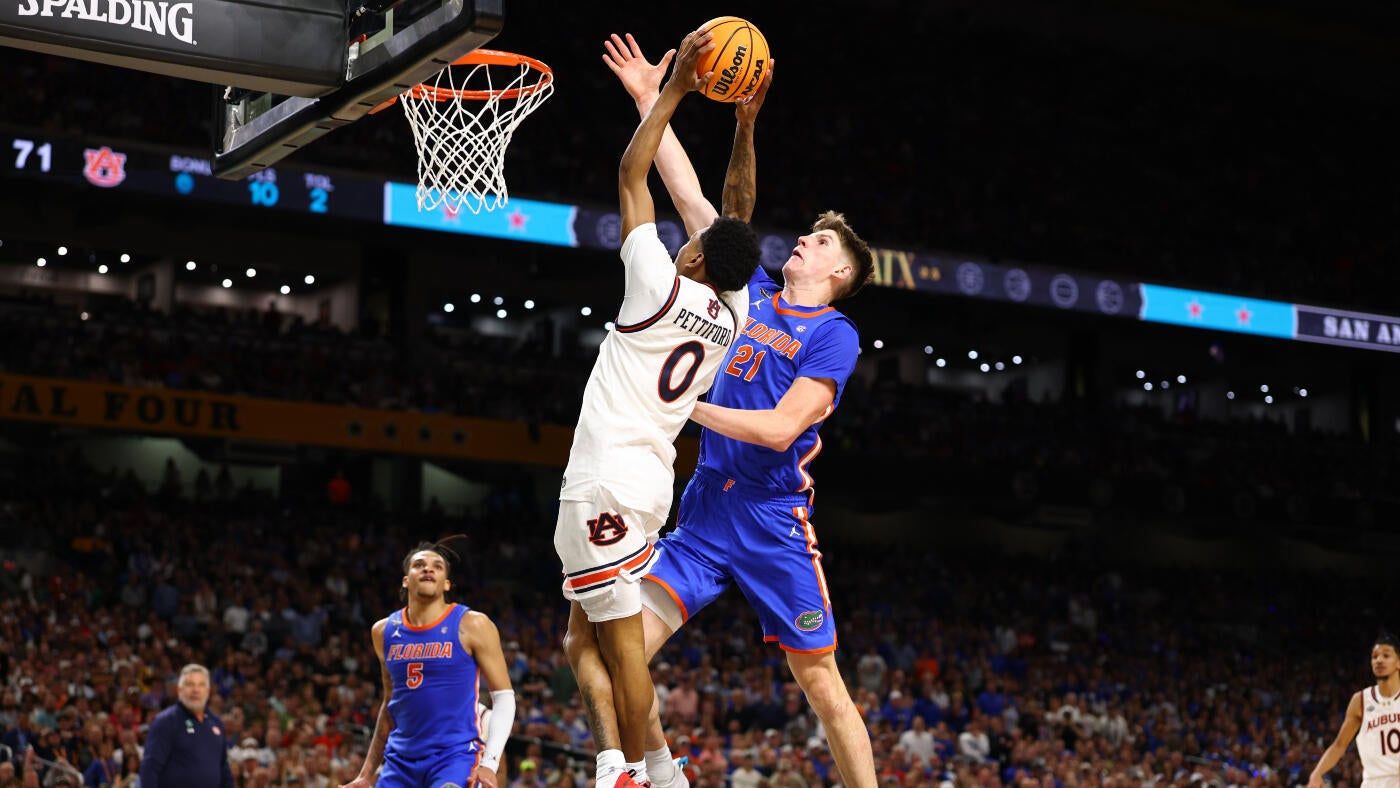
One of the biggest winners of the deadline was Michigan. Former UAB forward Yaxel Lendeborg, the No. 1 ranked player in the CBS Sports transfer rankings, decided to withdraw from the draft and return to college basketball as an All-American candidate. Lendeborg led the nation in double-doubles last season and was projected as a late-first-round pick after a strong showing at the NBA Draft Combine.
Here are selected winners and losers for the deadline for players to make their NBA Draft decisions.
Winner: Alabama’s Labaron Philon pulls off shocker
With 29 minutes remaining until the deadline passed to withdraw from the draft, Alabama’s NIL collective “Yea Alabama” announced that Philon would return to school. A return to Alabama wasn’t even in the cards. Philon wasn’t even a player mentioned as one to watch leading up to the deadline as someone who could return to school because he was firm about staying in the draft.
“I’m all-in on the draft,” Philon told reporters at the NBA Draft Combine earlier this month. “They weren’t surprised. They knew it already.”
With Philon back, it immediately adds firepower to Alabama’s offense. Philon was one of the best freshmen in college basketball last season, and as a projected first-round pick, it’s shocking that he decided to run it back. Alabama is one of the biggest winners for that reason alone.
Winner: Michigan’s patience rewarded
Lendeborg choosing to play another season of college basketball was one of the biggest surprises of the withdrawal deadline. It seemed like he had improved his stock enough to get selected at the end of the first round, but there is no such thing as a guarantee. Players who are projected as fringe first-round picks often rely on promises from NBA teams and their decision-makers to make a final call.
Lendeborg received a NIL package believed to be in the neighborhood of $3 million to return to school, sources told CBS Sports. Michigan loved to play with its double-big lineup last season, and Lendeborg fills a clear need as a double-double machine. With another year for Lendeborg to improve his draft stock, all parties involved could be massive winners in a year from now.
Why Yaxel Lendeborg withdrawing from the 2025 NBA Draft to play for Dusty May at Michigan is right decision
Cameron Salerno
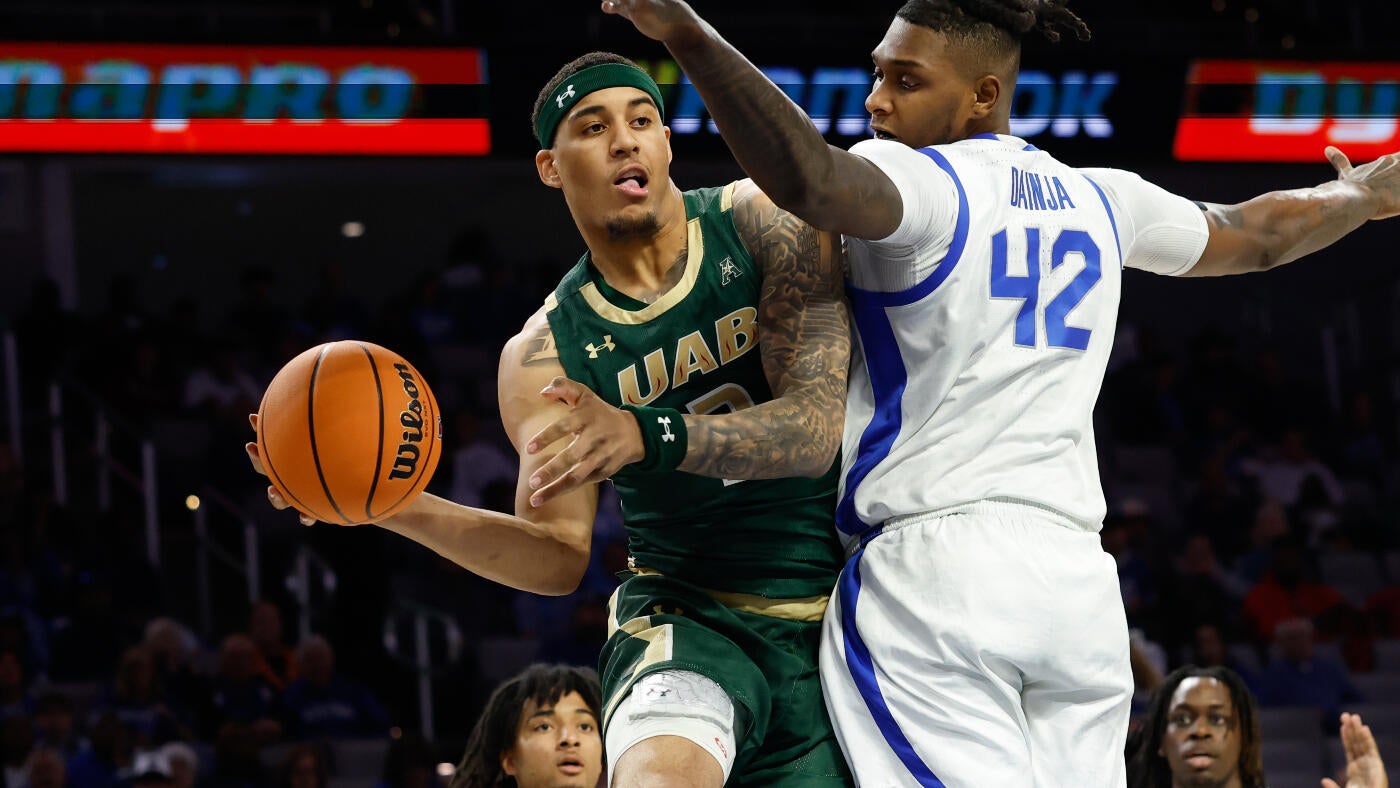
Loser: RJ Luis Jr. makes shocking draft decision
One of the biggest surprises of the withdrawal deadline was Luis staying in the draft. The Big East Player of the Year had a breakout season for St. John’s, but returning to school and raising his stock further would’ve been the best option. After all, when Luis entered the transfer portal, he was sought out by many top-tier programs. Add on how some of those schools may have become desperate late in the recruiting cycle, and Luis could’ve gotten paid and gone to a favorable situation in college.
Nonetheless, it’s hard to knock someone’s dream of wanting to play in the NBA as soon as possible. The best-case scenario is he winds up as a mid-to-late second-round pick. Getting drafted in that range means you face an uphill climb to make an NBA roster and likely play most of the season in the G League. It was trending that Luis would never play another minute of college basketball for quite some time, but it’s still surprising.
Winner: NIL agents get paid
While players earning life-changing NIL money are the biggest winners, their respective agents are also cashing out. Several high-profile NIL deals have been reported this offseason. UCLA star Donovan Dent received around $3 million. Lendeborg cashed in on a deal around the same number. All-American PJ Haggerty bypassed the NBA Draft and transferred to Kansas State for a big payday. As my colleague Isaac Trotter wrote last month, the influx of spending comes on the heels of the House vs. NCAA settlement, which would create a full-fledged revenue-sharing model and potential de facto salary cap. In the meantime, everyone is getting paid.
Expected House v. NCAA court ruling and NIL impact on future teams being felt at 2025 Final Four (ask Auburn)
Isaac Trotter

Loser: Cedric Coward’s gain leads to Duke’s pain
Duke probably wishes Coward never attended the NBA Draft Combine. That’s an exaggeration, but his performance at the event solidified his standing as a potential first-round pick. Coward transferred to Duke after entering the transfer portal but will never suit up for the Blue Devils. The Blue Devils moved quickly to replace Coward’s production with four-star forward Sebastian Wilkins and five-star International sensation Dame Sarr out of Italy. They’ll have the returning firepower needed to compete for a national title, but not getting Coward has to sting.
Winner: Florida is primed to make another title run
The reigning national champion saw its starting frontcourt of Alex Condon and Rueben Chinyelu withdraw from the draft to return to school. Their return solidifies Florida’s frontcourt depth as the best in the country. That group gave opposing teams nightmares during the NCAA Tournament. Add in transfers Boogie Fland and Xaivian Lee, and you have a team capable of making another title run next year.
Alex Condon returns to Florida: Gators may have top frontcourt after big man withdraws from 2025 NBA Draft
Austin Nivison
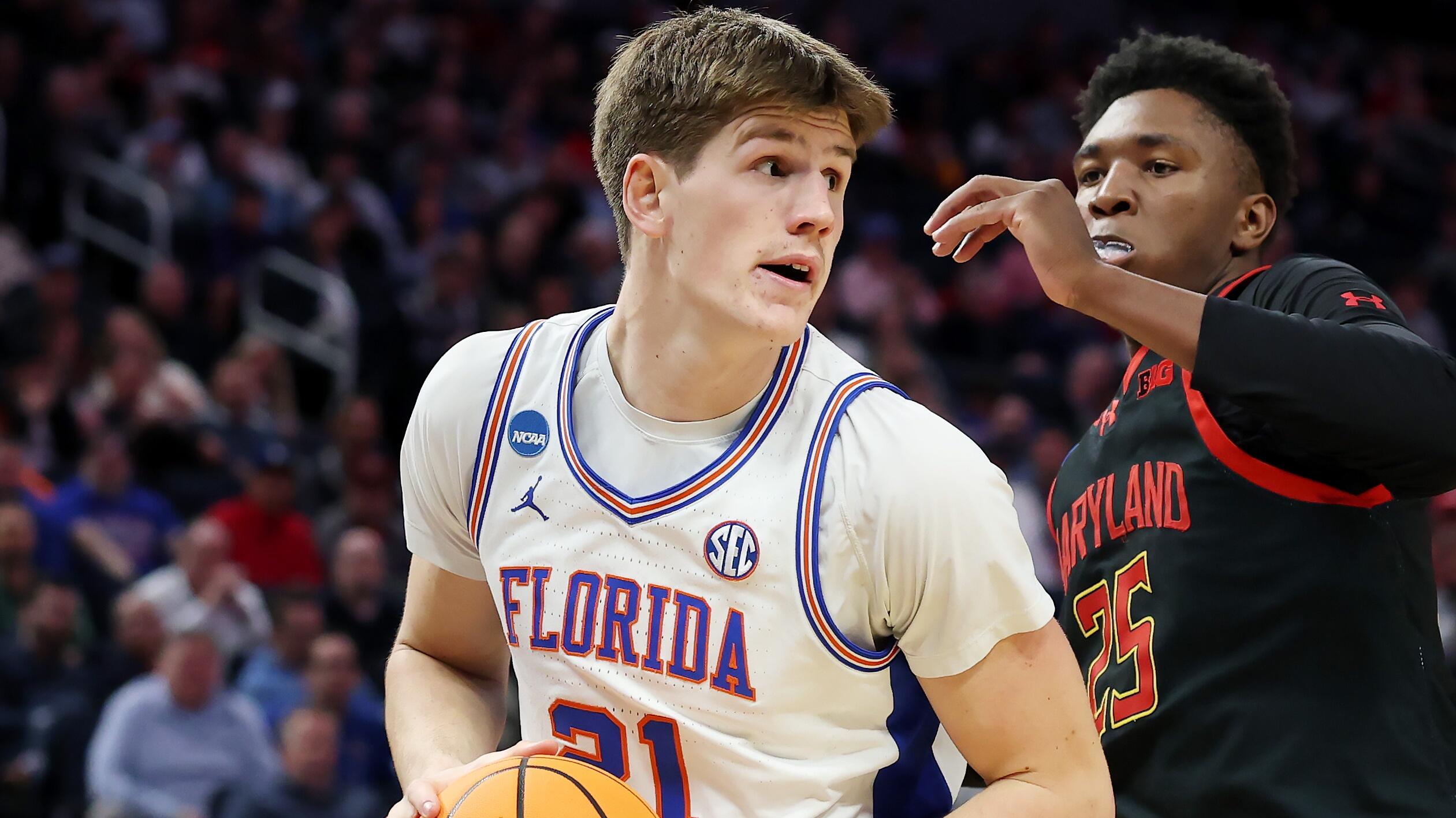
Loser: Arkansas’ Adou Thiero moves on
The good news for Arkansas coach John Calipari is his streak of players drafted in the first round is likely to continue. Unfortunately for the Razorbacks, that means Thiero is not returning. Calipari’s streak started in 2008 when the Chicago Bulls selected Derrick Rose from Memphis with the No. 1 overall pick. During his 15-year stint at Kentucky, Calipari produced 37 first-rounders, 25 of which were lottery selections.
Thiero is a fringe first-round pick. He has tools that will translate to the NBA, so it wouldn’t shock anyone if a team picking in the late 20s took a chance on him. All and all, Thiero is a big loss for Arkansas. He followed Calipari from Kentucky to Fayetteville and had the best season of his college career.
Winner: SEC stars run it back
Kentucky’s Oweh and Auburn’s Pettiford are both contenders for SEC Player of the Year. Pettiford primarily came off the bench during his freshman season at Auburn but was one of Bruce Pearl’s most impactful players. Pettiford’s role will increase significantly in his second season. Oweh was one of Mark Pope’s key commitments out of the transfer portal during Year 1 at Kentucky and he finished as the team’s leading scorer last season. The Wildcats made some splashes in the transfer portal, but getting a proven two-way talent like Oweh back is a major win for Pope and his staff.
Tahaad Pettiford withdraws from NBA Draft: Sophomore guard returns to Auburn after Final Four season
Matt Norlander
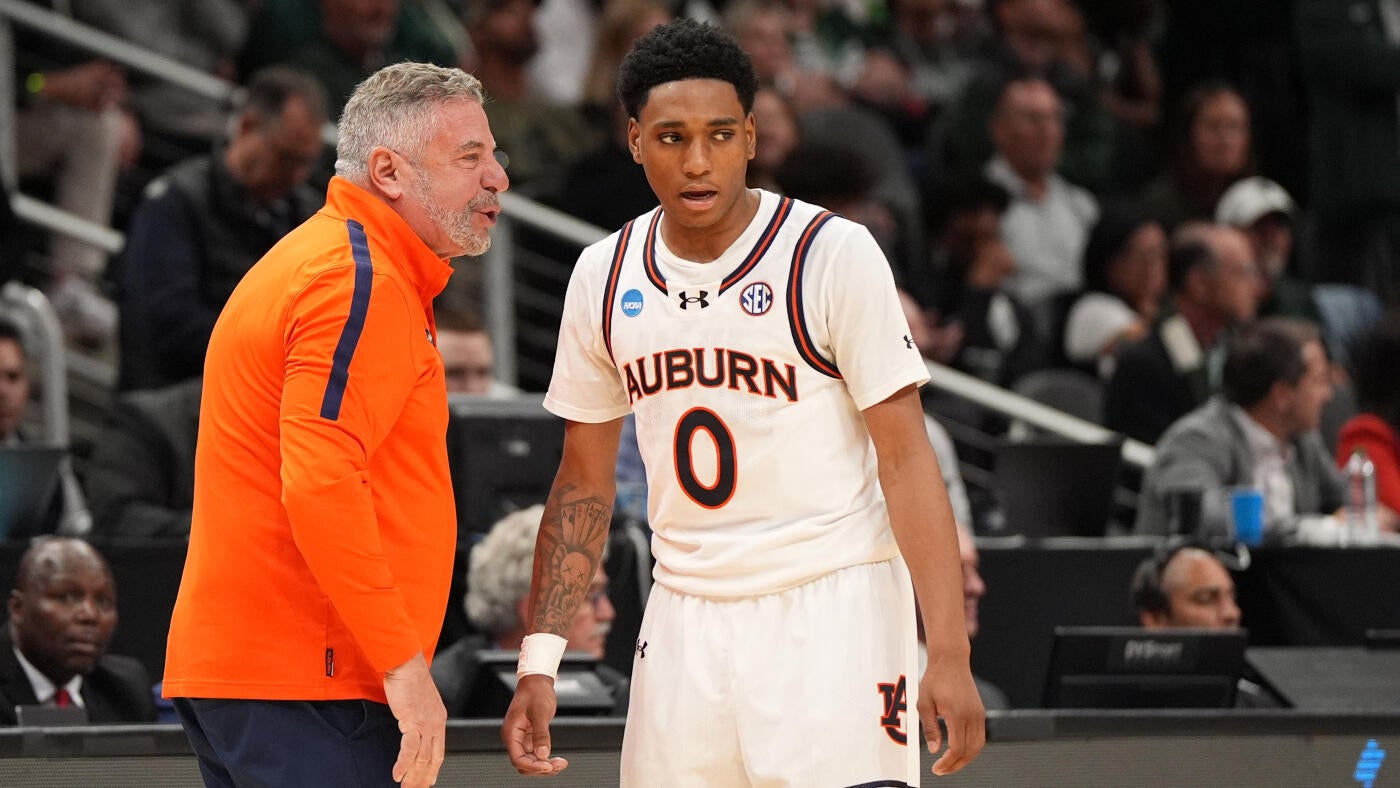
Loser: NBA teams picking in the second round
The NBA Draft talent pool is shrinking with more players are returning to school. And why wouldn’t they? Players drafted in the second round face an uphill climb to make an NBA roster. Most of their time is spent in the G League. Players like Oweh, Karter Knox and Milos Uzan decided to run it back instead of taking the risk of falling out of the first round. It’s a smart decision on their part, but it makes life even harder on NBA teams in search of second-round gems. Expect an increased focus on international prospects in the second round going forward.
NIL
Purdue basketball coach Matt Painter on what NCAA settlement means
Purdue basketball coach Matt Painter on Boilers’ 2025-26 season Purdue conducted its first practice on Monday ahead of the upcoming season. Hear what coach Matt Painter said afterwards. WEST LAFAYETTE − The financial allotment for college athletes went from one extreme (legally nonexistent) to another when the NCAA instituted name, image, and likeness (NIL), allowing […]
Purdue basketball coach Matt Painter on Boilers’ 2025-26 season
Purdue conducted its first practice on Monday ahead of the upcoming season. Hear what coach Matt Painter said afterwards.
WEST LAFAYETTE − The financial allotment for college athletes went from one extreme (legally nonexistent) to another when the NCAA instituted name, image, and likeness (NIL), allowing student-athletes to capitalize on their marketability.
The rich, essentially, got richer.
On Friday, a nearly half decade battle through the court system concluded with the NCAA settlement which allows schools to pay their athletes directly.
Purdue athletic director Mike Bobinski stated previously Purdue would be a full participant up to the cap limit, estimated at $20.5 million.
After Purdue basketball had its first summer practice on Monday, head coach Matt Painter, who currently serves as third vice president on the National Association of Basketball Coaches board of directors, was asked if college basketball got better based on the ruling.
“Some competitive balance is all we really want,” Painter said. “It wasn’t name, image and likeness before. This gives you more of a grasp of having a core amount of money to pay these guys, which is a lot less than the money that’s going on right now. And then, anything on top of it is real name, image and likeness.”
The idea behind name, image, and likeness was for college athletes to capitalize on their notoriety via avenues such as autograph signings, hosting sports camps, or appearing in advertisements, for example.
Painter mentioned specifically from his own program since the NIL went into effect the names of two-time National Player of the Year Zach Edey, selected ninth overall in last year’s NBA draft, and Braden Smith, the reigning Big Ten Player of the Year and Bob Cousy Award winner for the nation’s top point guard as marketable athletes who fit the supposed NIL idea.
“When everybody gets money, not everybody in Major League Baseball gets money in name, image and likeness and they’re in the big show,” Painter said. “If you watch a baseball game and there’s 52 guys on two rosters, tell me how many guys are on those commercials. Two? Three? Four? Five? Not very many. That’s the market. Not everybody is marketable that plays college basketball and gets paid. …
“There’s a lot of things that haven’t been fair across the board, so hopefully this equals things out a little bit.”
Sam King covers sports for the Journal & Courier. Email him at sking@jconline.com and follow him on X and Instagram @samueltking.
NIL
Promotions for 2025 NIU Football Home Games Set
Football | June 10 Story Links DeKALB, Ill. – Northern Illinois University will welcome alumni, celebrate its football history, honor members of the military and first responders, teachers and more during its final season in the Mid-American Conference as the promotions for NIU’s 2025 football home games were announced on […]
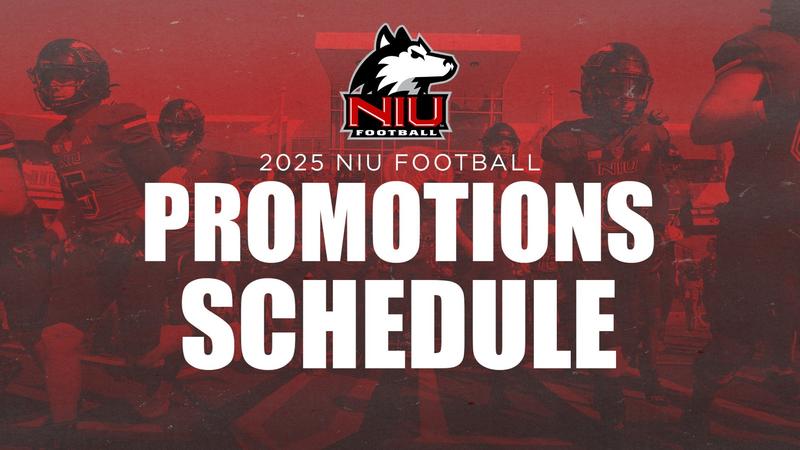
Football | June 10
DeKALB, Ill. – Northern Illinois University will welcome alumni, celebrate its football history, honor members of the military and first responders, teachers and more during its final season in the Mid-American Conference as the promotions for NIU’s 2025 football home games were announced on Tuesday.
NIU kicks off its 124th college football season on August 30th versus Holy Cross on “First Saturday in Huskie Stadium” with fans encouraged to wear red and help celebrate Football Champions Weekend with stars of the past.
The Huskies next are home on Saturday, September 27th to take on San Diego State in the annual Salute to Service game, which will also include high school band day, scout day and a celebration of teachers in conjunction with Extra Yard for Teachers Week.
On Saturday, October 4th, the oldest Homecoming in the state of Illinois will be celebrated for the 118th time with NIU taking on MAC foe Miami for the Mallory Cup. In addition to welcoming alumni from across the country, the Huskie Football program is extending a special invitation to former football student-athletes.
The Huskies and Ball State will battle for the Bronze Stalk Trophy in DeKalb on Saturday, October 25th during Family Weekend, which has also been dubbed the cancer awareness game and youth sports day. NIU employees and health care workers will be recognized and can take advantage of ticket discounts.
NIU plays its final midweek #MACtion game on Tuesday, November 18th versus Western Michigan with the Huskies’ MAC finale set for Friday, November 28th on “Black Friday” with a Black Out (wear black). Prior to the game, which kicks off at 11 a.m. (CT), 2025 seniors and their families will be honored.
The list is not final as additional promotions will be added as they are finalized.
Season ticket prices for NIU’s six 2025 home games begin at as little as $110 each for a general admission ticket. With the purchase of the Huskie 4-Pack (four or more tickets), pay $110 each for a reserved seat in sections A, B or F on the West Side. Reserved west side seats are priced at $152 or $170 with discounts available for NIU alumni, NIU faculty/staff, DeKalb County residents, seniors (62+) and members of the Varsity Club (former student-athletes).
Fans who purchase 2025 Huskie Football season tickets by June 30th of this year automatically qualify for the “Lock In” rate, giving them the ability to purchase similar season tickets in 2026 and 2027 at 2025 prices, provided they meet the season ticket deadline each year.
Renew or purchase tickets for the 2025 NIU Football season now online at NIUHuskies.com/tickets. For more information, call the NIU Ticket Office at 815-753-PACK (7225) weekdays between 9 a.m.-5 p.m. or email huskiestickets@niu.edu.
— NIU —
Twitter: @NIUAthletics
Facebook: NIU Huskies
Instagram: niuhuskies
YouTube: NIU Athletics Official
NIL
6.10: Former Maryland men’s basketball guard Ja’Kobi Gillespie plans to take Maryland’s partnered NIL collective to court
Former Maryland men’s basketball guard Ja’Kobi Gillespie has plans to take Blueprint Sports — the company that manages Maryland’s NIL contracts — to mediation court, as reported on Monday by Taylor Lyons and Sam Jane of the Baltimore Sun. Ja’Kobi Gillespie, a former Terps men’s basketball standout guard who transferred to Tennessee in April, is […]
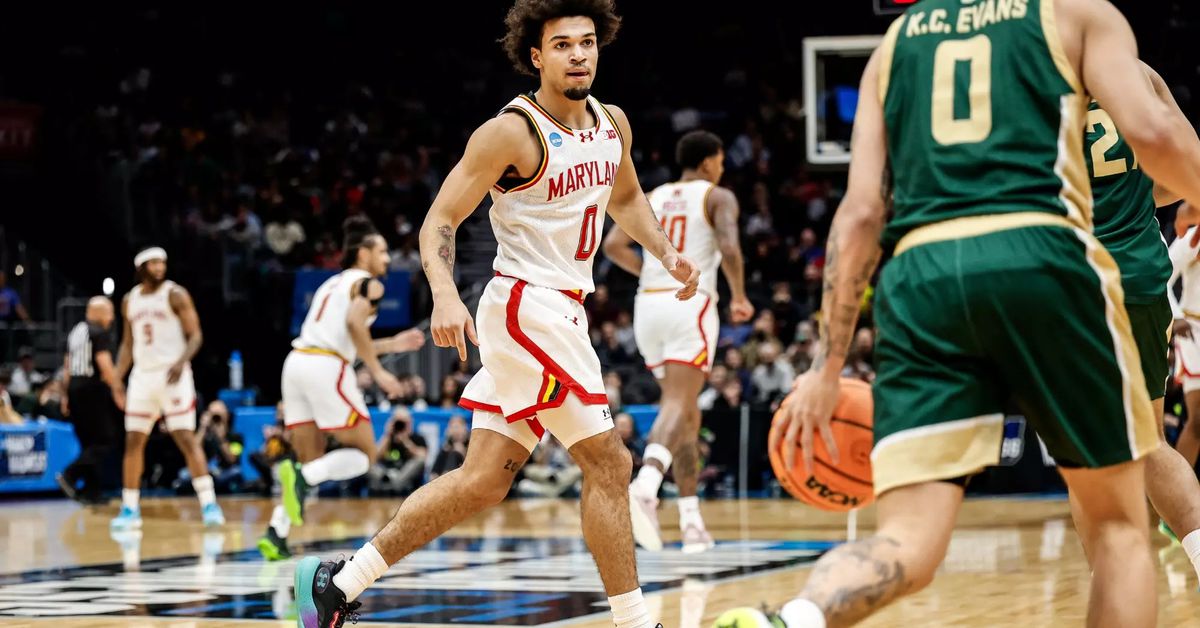
Former Maryland men’s basketball guard Ja’Kobi Gillespie has plans to take Blueprint Sports — the company that manages Maryland’s NIL contracts — to mediation court, as reported on Monday by Taylor Lyons and Sam Jane of the Baltimore Sun.
Ja’Kobi Gillespie, a former Terps men’s basketball standout guard who transferred to Tennessee in April, is taking Blueprint Sports, a name, image and likeness collective that the University of Maryland partners with, to mediation court this month over an unpaid contract,… pic.twitter.com/NCvMvzRDJG
— The Baltimore Sun (@baltimoresun) June 9, 2025
Gillespie transferred to Tennessee after the 2024-25 season when former head coach Kevin Willard left Maryland for Villanova.
According to the Baltimore Sun, Gillespie’s father, Byron Gillespie, and lawyer, Issac Connor, claim that the former Maryland guard did not receive his final payments for his deal with Maryland.
Gillespie’s camp also claimed that there was no clause in Gillespie’s contract with Maryland that would terminate the deal if he transferred.
According to Inside Maryland Sports, Maryland’s former NIL Director Harry Geller disagreed with Gillespie’s claim.
Former Maryland NIL director Harry Geller pushed back against Ja’Kobi Gillespie’s unpaid NIL claims: “Why he is pursuing this is beyond me.”https://t.co/RPKmwogQbd
— Jeff Ermann (@Jeff_Ermann) June 9, 2025
More from Jeff here about Gillespie’s situation.
“When Blueprint took over, all contracts were transferred to them and rewritten,” Harry Geller told IMS today. “The clause about transferring was not in Jakobi’s contract, but was in all the other 12 contracts.” https://t.co/HeNPhUdir9
— Taylor Lyons (@taylorjlyons) June 9, 2025
Geller adds: “It has not been explained to me why one was omitted.”
Gillespie’s deal was for $600k, leaving an unpaid balance of $100k, according to Ermann. His father and lawyer told me Blueprint offered 1/4 of that to settle, so about $25k.
— Taylor Lyons (@taylorjlyons) June 9, 2025
In other news
Former Maryland men’s basketball guard Melo Trimble was named the VTB League playoffs MVP for the second straight season after leading CSKA Moscow to the championship.
Melo Trimble was named the Playoff MVP of the VTB League, the top league in Russia, after leading his team CSKA Moscow to the championship. This marks the second straight season Trimble has won both the award and the VTB Championship.
: (vtbleague/IG) pic.twitter.com/3ppENmFd0R
— Inside Maryland Sports (@Terrapins247) June 9, 2025
Former Maryland football safety Beau Brade suffered an apparent lower-body injury during OTAs with the Baltimore Ravens, according to Jeff Zrebiec and Kevin Oestreicher.
Ravens S Beau Brade left OTAs with an apparent lower-body injury, per multiple reports
He couldn’t put much weight on his leg as he was helped off the field by trainers, per @jeffzrebiec pic.twitter.com/yzF5SRF1oG
— Kevin Oestreicher (@koestreicher34) June 9, 2025
Former Maryland football quarterback Taulia Tagovailoa went 15-of-29 for 230 yards with three touchdowns and one interception in his second game with the Hamburg Sea Devils of the European League of Football.
Taulia Tagovailoa played a great game yesterday in his second appearance for the Hamburg Sea Devils of the European League of Football (ELF). Tagovailoa went 15/29 for 230 YDS while throwing 3 TDs and 1 INT. He added 29 yards on the ground.
: (hamburgseadevils/IG) pic.twitter.com/0IhM2KyyzH
— Inside Maryland Sports (@Terrapins247) June 9, 2025
Former Maryland women’s basketball guard Katie Benzan was named the general manager of the Salt Lake City Stars, the Utah Jazz’s G League affiliate.
Former Maryland women’s basketball guard Katie Benzan has been named the general manager of the Salt Lake City Stars, the Utah Jazz’s G League affiliate, according to @Terrapins247. https://t.co/VxiKg9wxzR
— Ben Messinger (@benmessi_) June 9, 2025
Class of 2028 defensive lineman Tervon Glass received an offer from Maryland football.
Class of 2027 receiver Davion Vanderbilt received an offer from Maryland football.
Maryland baseball right-handed pitcher Joey McMannis entered the transfer portal on Monday, according to 64Analytics and D1 Baseball.
BREAKING: Per @64Analytics, Maryland RHP Joey McMannis has entered the transfer portal. McMannis had a tough sophomore year after a good freshman year and possesses some intriguing upside. Low-90s fastball (topped 95-96 in the fall). Solid slider, splitter as his secondaries. pic.twitter.com/deYeIB9lx5
— On The Clock | College Baseball and MLB Draft (@OnTheClock_1) June 9, 2025
Former Maryland baseball first baseman Holis Porter committed to Texas Tech in the transfer portal.
Maryland men’s basketball will face Virginia on Dec. 20 in Charlottesville, according to Jon Rothstein.
Source: Next season’s game between Maryland and Virginia will be played on December 20th in Charlottesville.
Start of a four-year series.
— Jon Rothstein (@JonRothstein) June 9, 2025
NIL
Exclusive: How Former Athletes Benefit From House v. NCAA Settlement
Exclusive: How Former Athletes Benefit From House v. NCAA Settlement originally appeared on Athlon Sports. Over the weekend of June 6th, a pivotal decision was made that will profoundly impact the entire realm of college athletics. Judge Claudia Wilken approved the House settlement between the NCAA and its conferences, enabling member institutions to compensate their […]
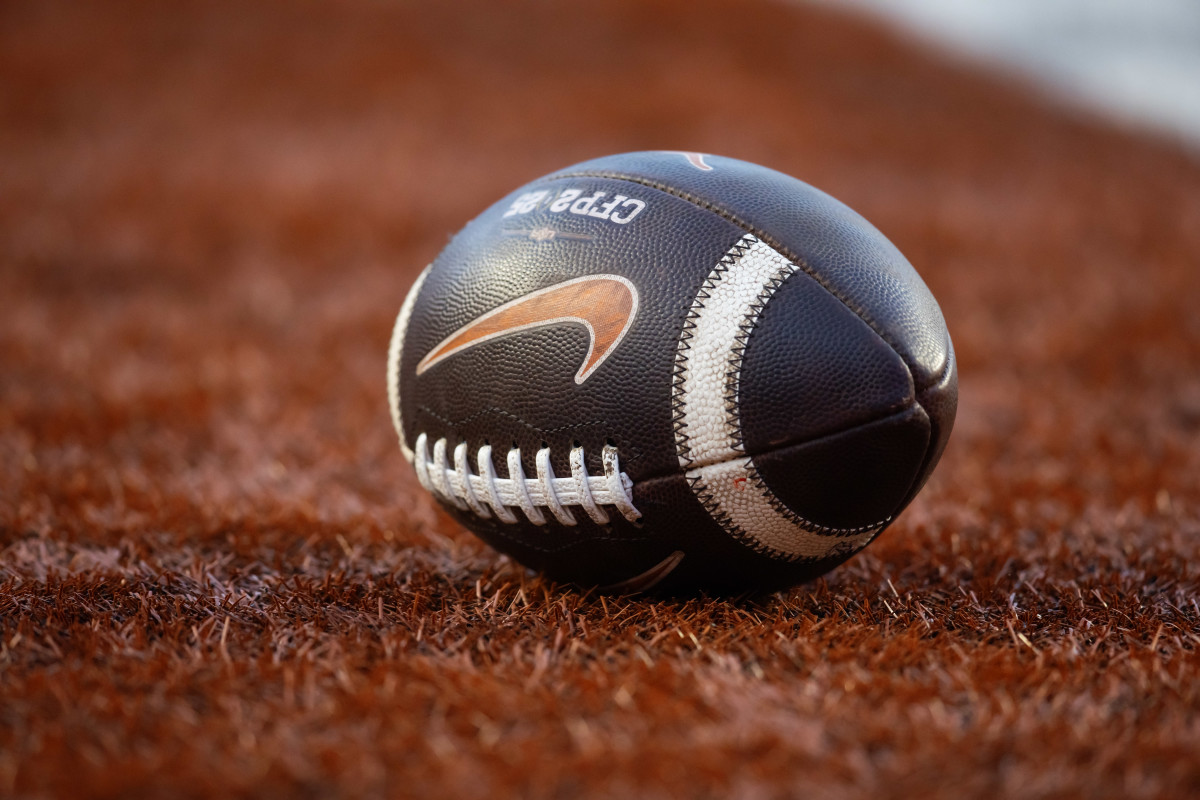
Exclusive: How Former Athletes Benefit From House v. NCAA Settlement originally appeared on Athlon Sports.
Over the weekend of June 6th, a pivotal decision was made that will profoundly impact the entire realm of college athletics. Judge Claudia Wilken approved the House settlement between the NCAA and its conferences, enabling member institutions to compensate their athletes directly for the commercial use of their names, images, and likenesses.
Advertisement
The annual allotment per school will officially be determined at a later date, but estimates have the allotment payout sitting at roughly $200 million dollars per school, with expected increases each year. This crucial decision will change the very landscape of college athletics when it goes into effect on July 1st, with current and future athletes reaping most of the benefits. Full disclosure: I’m one of the many expected to receive a payout on a retroactive basis from my time at Georgia Tech, Arkansas, and Colorado.
Numerous inquiries have emerged in response to this highly anticipated resolution. But one question particularly resonating with former athletes: Is there a means for me to derive any benefit? The answer to this question is unequivocally, yes!
Within the settlement agreement, the NCAA will compensate approximately $2.8 billion in retroactive damages to athletes who participated in college athletics from the academic year 2016 onward. Emails containing login information to claim their share were sent to all former eligible athletes on file.
For those former athletes that qualify, you would have had to file your claim on collegeathletecompensation.com before or on January 31st, 2025. However, the claim tab on the website is still open to filing
Advertisement
This website also has a plethora of information on important dates, court documents, FAQs, and much more relating to the case. It also enables athletes to view an estimate of their potential compensation from the settlement.
The payout breakdown encompasses various factors, primarily benefiting former football and basketball players from Power Five programs. Additional factors contributing to the breakdown include, but are not exhaustive, “broadcast NIL payment,” “video game NIL payment,” “Compensation for Athletic Services payment,” “Lost NIL payment,” and “Hubbard payment.”
As a former student-athlete and transfer student between three Division I universities in three different Power Five conferences, I observed three distinct compensation estimates for each institution.
Upon comparing these estimates, I identified a significant disparity in compensation based on the university, despite all institutions being members of the Power Five conference. The highest payout is anticipated to be awarded to former SEC student-athletes by a substantial margin, although each payout remains a substantial sum for the former student-athletes of any institution.
Advertisement
Based on the provided information, it appears that the SEC leads in terms of settlement distributions. However, all former athletes are compensated equitably for their contributions and impacts during their tenure at their respective institutions.
Related: Michigan Running Back’s Groundbreaking NIL Deal Redefines College Football
Three years at Georgia Tech was nearly the equivalent to one at Arkansas. Also, the year at Colorado shows a clear demand from Deion Sanders and the ‘Prime Effect’. It’s less than my 2022 season in Fayetteville, but given the shape of Pac-12 and how we carried the conference in ratings, it’s comparable.
Related: How the NCAA House Ruling Could Reshape UNC Basketball
As the new era of college athletics commences, it is prudent to acknowledge the uncertainties that lie ahead. Legal proceedings continue to unfold to ensure that all student-athletes, both past, present, and future, receive the most optimal opportunities and experiences.
Advertisement
As new information becomes available and inquiries arise, we will diligently provide timely updates on the latest developments pertaining to this settlement and name, image, and likeness.
This story was originally reported by Athlon Sports on Jun 10, 2025, where it first appeared.
NIL
Mack Brown calls for college football to have one transfer portal window
College sports continue to rapidly change, with coaches and administrators looking to stabilize the sport. Now, former head coach Mack Brown feels he has a solution to at least the chaos of the Transfer Portal. That’s cutting it down to one window in the winter. As of now, there are two windows for football players […]

College sports continue to rapidly change, with coaches and administrators looking to stabilize the sport. Now, former head coach Mack Brown feels he has a solution to at least the chaos of the Transfer Portal. That’s cutting it down to one window in the winter.
As of now, there are two windows for football players to enter the Transfer Portal. One comes in December, following the regular season. The other is following spring practice. Brown, as he explained on See Ball Get Ball, thinks keeping that to just the winter, and adjusting the schedule is key for college football.
“Right now, I would move the Playoff back as far as I could, and I would have one window,” Mack Brown said. “And I would have it in January, and I would try to have it after the national championship game, and before school starts the next two or three weeks. Then, you have your team for the spring.”
The Transfer Portal windows have already been cut down significantly in how long they’re open. Coaches haven’t been done there, though, and many have advocated for further changes, including going down to one window. Others have advocated for an April-only window. Regardless, most want some kind of change.
The challenge of the spring window, in Mack Brown’s mind, is highlighted by the current situation at Cal. The Golden Bears saw their roster get raided this offseason, including some massive losses to the running back room in the spring. That group of outgoing backs included star Jadyn Ott.
“Cal, I was told, lost five running backs after spring practice. How do you lose five running backs and replace them? You can’t,” Brown said. “So, we don’t need people tampering with guys all spring. We don’t need guys out in spring practice that are thinking about leaving. And we don’t need coaches that are coaching kids that aren’t gonna be there.”
The winter calendar has largely been discussed as being chaotic. Between high school recruiting, bowl prep, the College Football Playoff, and the Transfer Portal, things can be chaotic. Mack Brown knows this, which is why he’d address that by rearranging the schedule as much as possible. That could go so far as to even cut back on the number of games played so that players can make their transfer decisions while keeping in line with academic calendars.
“So, let’s go through our season. Let’s do the best we can do. Probably gonna have to cut back on some games during the Fall or move them back a little bit,” Brown said. “But let’s try to get the season over where we have a window where you can still transfer if you want to, because the top kids know where they’re going anyway. They’ve got agents now. I don’t think they even call it tampering anymore because usually when the kid said, ‘I’m in the portal, but listen, I don’t want any contact.’ Well, yeah, he knows where he’s going.”
The House Settlement, which was recently approved by the judge overseeing the case, is going to be the next major change to college sports. Seeing how that impacts the Transfer Portal will probably need to come first, at least for a short period, before any major changes like removing a window are made.
NIL
Mandel: House settlement clearinghouse won’t create CFB’s goal for more level playing field
With the House vs. NCAA settlement approved, college athletics is about to begin the latest chapter in its long history of attempting to interfere with the market for athletes’ services. Let’s see if this version holds up better in court than all the ones before it. As you know by now, the House settlement has […]

With the House vs. NCAA settlement approved, college athletics is about to begin the latest chapter in its long history of attempting to interfere with the market for athletes’ services.
Let’s see if this version holds up better in court than all the ones before it.
As you know by now, the House settlement has given birth to a new system by which schools for the first time can directly pay their athletes up to $20.5 million this coming school year. The schools will insist these are purely NIL deals and do not constitute “pay-for-play,” but of course, they are entirely contingent on the athlete playing for that university. And that’s fine. Nothing wrong with paying someone for their services.
But where the settlement veers into outright market manipulation is the establishment of a new NIL Go clearinghouse, operated by Deloitte, by which athletes must submit all deals they receive from outside sources that exceed $600. Which, in the major sports, is pretty much all of them. If Deloitte deems, say, a running back’s $1 million deal from a school’s collective to be above “fair market value,” he cannot accept it.
In every other industry in this country, “fair market value” is whatever someone is willing to pay you. Just ask the many mediocre football coaches who make $6-8 million a year. Or the athletic directors who make $1.2 million a year to hire those mediocre coaches. No clearinghouse for those folks.
Every legal expert I’ve spoken with about this subject thinks there’s little chance this clearinghouse would survive a legal challenge. It sure sounds like yet another instance of competitors (in this case, the Power conferences) conspiring to limit athletes’ compensation. Go back and read the Supreme Court decision in Alston v. NCAA to see how the highest court in the land feels about restrictions on athletes’ compensation.
It’s somewhat poetic the House settlement got approved during Game 3 of the WCWS, where $1M pitcher NiJaree Canady nearly led Texas Tech to an improbable national title.
Because the purpose of the new Deloitte NIL clearinghouse is to stamp out collectives like Texas Tech’s.
— Stewart Mandel (@slmandel) June 7, 2025
Nevertheless, the Power conferences — it’s them, not the NCAA driving this — are pressing ahead. On Monday, they proudly unveiled their newly created enforcement entity, the College Sports Commission, led by former Major League Baseball executive Bryan Seeley, who is likely being paid seven figures to make sure college athletes stop getting paid seven figures. Presumably, they’ve consulted with their lawyers, who have told them the thing is ironclad. The next Judge Wilken will be totally fine with it.
By now, you may be asking yourself, “Why are they doing this? Who exactly is being harmed by a transfer quarterback getting $3 million from a school’s collective?” Athletes going into the portal at any moment is an understandable source of frustration, but the House settlement does nothing to address that issue. It just wants to curb how much one gets for going into the portal.
The stated reason, as Nick Saban, for one, has said 1,000 times, is the need for a “level playing field.” It’s not “fair” that Texas Tech has an oil billionaire willing to spend $10 million-plus on the transfer portal if Alabama doesn’t have one. How many times have we heard: This is not what NIL is intended for.
It doesn’t particularly matter at this point what NIL was intended for. This is what it’s become. Collectives became a thing specifically because schools didn’t want anything to do with paying athletes. Now that they’re forced to, they want to unwind time and reverse things.
But what’s really rich is the whole “level playing field” thing.
There has never, ever been a level playing field in college recruiting. The schools with the most money have always held an advantage over everyone else. They have the most history, the biggest stadiums, the best-paid coaches and the most lavish facilities. Ohio State was dominating Purdue in recruiting long before there were ever NIL collectives, and the Buckeyes will keep dominating in the revenue-sharing era. You could set the cap at $60.5 million, not $20.5 million, and there’s still no scenario where the Boilermakers would be able to outspend the Buckeyes.
Meanwhile, people have been so busy the past few years shouting that the sky is falling that they’ve failed to notice that NIL may be the first development in history that’s actually given a larger pool of teams a chance at landing top talent.
The top quarterback in the portal this offseason, Tulane’s Darian Mensah, did not go to Georgia or Ohio State. He chose Duke, where he’s getting a reported $4 million NIL deal. The nation’s No. 1 men’s basketball recruit, A.J. Dybantsa, is not going to North Carolina or Kansas; he’s going to BYU, for a reported $5 million deal. And last year, softball phenom NiJaree Canady turned down that sport’s biggest juggernaut, Oklahoma, in favor of Texas Tech, which gave her that sport’s first-ever seven-figure deal. Earlier this month, she and her team ended the Sooners’ reign — and she signed another deal.
All of those deals got done before the House settlement was approved. Had they not, theoretically, Deloitte could flag them for being too far above “market value.”
Clearly, booster-driven collectives aren’t going away. If Oracle founder Larry Ellison wants to give the next Michigan quarterback recruit $4 million, it seems highly unlikely someone could tell him no. Either the collectives will get more creative in how they structure their deals, or someone is going to sue and succeed in getting an injunction.
Neither the schools nor the athletes would be the ones filing that suit because they’re bound by the settlement. But boosters aren’t bound by it. Companies aren’t bound by it. And, most concerning to the conferences, state attorneys general aren’t bound by it. They’re the folks who succeeded in getting both the NCAA’s booster restrictions and transfer restrictions shot down.
We know this much: Most schools that plan to offer the maximum $20.5 million in House payments are following a formula by which they’ll allocate around $13 million for football and $3 million for men’s basketball. Ohio State last year spent $20 million on football alone, and many schools are spending way more than that this year. Kentucky is one of several programs planning to spend more than $10 million on men’s basketball.
Coaches’ and administrators’ salaries have only gone up and up and up over time, but the powers that be seem to think they can make athletes’ unofficial salaries go down with their magic clearinghouse.
That’s not generally how markets work.
(Photo: Carmen Mandato / Getty Images)
-

 Professional Sports3 weeks ago
Professional Sports3 weeks agoJon Jones answers UFC retirement speculation as fans accuse champion of 'holding the belt …
-

 Motorsports3 weeks ago
Motorsports3 weeks agoWhy IHOP Rode With Dale Earnhardt Jr. In Amazon NASCAR Debut
-

 NIL2 weeks ago
NIL2 weeks ago2025 NCAA Softball Tournament Bracket: Women’s College World Series bracket, schedule set
-

 Health5 days ago
Health5 days agoOregon track star wages legal battle against trans athlete policy after medal ceremony protest
-

 College Sports1 week ago
College Sports1 week agoIU basketball recruiting
-

 Professional Sports5 days ago
Professional Sports5 days ago'I asked Anderson privately'… UFC legend retells secret sparring session between Jon Jones …
-

 Youtube3 weeks ago
Youtube3 weeks agoAnt greets A-Rod & Barry Bonds before Game 3
-

 Rec Sports2 weeks ago
Rec Sports2 weeks agoJ.W. Craft: Investing in Community Through Sports
-

 Professional Sports5 days ago
Professional Sports5 days agoUFC 316 star storms out of Media Day when asked about bitter feud with Rampage Jackson
-

 Rec Sports2 weeks ago
Rec Sports2 weeks agoScott Barker named to lead CCS basketball • SSentinel.com































 Stephen A. responds to LeBron’s NBA coverage criticism | First Take
Stephen A. responds to LeBron’s NBA coverage criticism | First Take






